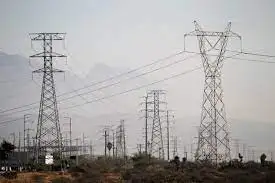Big energy savings dwell here
Months later, on a sweltering day, with dust swirling around the treeless hilltop where the house stands, it was a comfortable 24C indoors.
Both numbers were good news for Braden, a beef farmer and former Hamilton city councillor. It means the building, in Flamborough, a rural suburb of Hamilton, is working.
The winter interior might seem frosty, but the cold snap had lasted several days and the house was unheated. And conditions inside remained far better than bearable during the heat wave without benefit of tree shade or air conditioning.
Braden and his wife, Cathy, are putting the finishing touches on a home that's so energy efficient they expect to consume only 15 per cent as much energy for heating and cooling as a conventional place of the same size and design. Electricity consumption will be cut in half.
Nearly two years ago, the Star reported on the project when the main energy-saving features – airtight, double-frame construction; thick insulation; triple-glazed windows; main windows that face south, with canopies angled to shade the interior in summer and allow sunlight to enter in winter – were underway.
Apart from the deep windowsills, it looks much like any other well-built home, including a kitchen with all the major appliances. And that's the way Braden wants it. His goal is to show that building low-energy housing isn't a far-out, hi-tech or expensive enterprise.
Developers could apply the techniques for about $12,000 per dwelling, he says. Like him, they may not even need a furnace or air conditioner.
Braden's house is also off the electricity grid. Solar and wind will produce almost all the power, with a small propane generator for emergencies. That gear cost $42,000.
But that's almost a sideline to Braden's main message – the potential of conservation to cut costs and, more important, reduce the greenhouse gas emissions that cause global warming. The cheapest, most environmentally friendly energy is what you don't consume.
The measures don't rely on complex equipment, and are far more effective than the change-a-light-bulb and weatherstrip-the-doors kind of advice usually offered.
"I'm only interested in answers that apply to everyone," Braden says. "I'm not an elitist. This house is a clear indication that all the problems are solvable, with no discomfort and at an affordable price."
Except that not every dwelling could face south, he says, "all this stuff could go in a mass-produced home."
The main requirements: Make it air tight, insulate well, then control the impact of sunlight. That includes pouring the basement floor over a sandwich of insulating foam boards and water barrier.
On a recent damp, cloudy day, the house was comfortable inside, with only one small log in the fireplace. And that's before installation of the crucial basement and attic insulation and vapour barriers was done.
Braden figures that when the house is finished, warmed up and occupied, he and Cathy will get by with just two or three fires a week.
The house, with 1,450 square feet of living space on two floors, has been a three-year labour. Say Braden, who began building energy-efficient homes 25 years ago: "I forgot how much work it is."
The house has taken so much time mainly because the couple designed and built it themselves, and insisted on high-quality materials and craftsmanship. The front resembles a late-19th century farmhouse. The exterior is covered in wood cut to look like rough-hewn logs; the interior floors are maple from near Huntsville. But that had nothing to do with saving energy: It simply reflects the style they wanted, and Braden's love of wood.
Other delays came because the building code doesn't recognize some of the construction techniques. And the few higher-tech gadgets he's installing are still hard to find in Canada.
The toilet provides either two or six litres per flush, instead of the 13 that flow through conventional models and the six-litre minimum of most low-flush models. It's from Australia, where water is scarce.
The hot water system will combine a solar system to preheat the water and a tankless on-demand system that activates a propane heater when a tap is turned on.
It makes sense only if the system recognizes the water has been preheated: It would waste energy if it operated as if heating cold water.
Braden found a Canadian solar warmer. But the "smart" on-demand system had to come from Europe, where high energy costs inspire such innovation.
"Conservation doesn't break, it doesn't need service and you never need to take it to a shop for repairs," Braden says.
The two made a few compromises. One: A California-made fridge that would warm the kitchen in winter and send its heat outdoors in summer turned out to be too expensive for the meagre electricity saving.
The house is full of good, simple ideas. Wall switches let the Bradens easily cut power to the TV, microwave, stereo and other electronic devices when they're going to be away, to shut "phantom loads," such as clocks and standby power, that consume energy even when the unit is turned off.
Heat from the fireplace is piped throughout the house. Neoprene and caulking create a draft-proof seal where vent pipes go through the exterior walls.
About 600 people have visited the house, and Conestoga College, in Kitchener-Waterloo, plans to use it in a building design course.
Few politicians have shown interest; Braden hopes that will change.
With climate change threatening, and energy prices on the rise, this type of housing will become essential, he says. But it will cost four times as much to retrofit than to build properly from scratch.
"The time is now to do it. It's just novel at the beginning."
Related News

UK net zero policies: What do changes mean?
LONDON - British Prime Minister Rishi Sunak has said he would delay targets for changing cars and domestic heating to maintain the consent of the British people in the switch to net zero.
Sunak said Britain was still committed to achieving net zero emissions by 2050 and denied watering down its climate targets.
Here are some of the current emissions targets for Britain's top polluting sectors and how the announcement impacts them.
TRANSPORTATION
Transport accounts for more than a third (34%) of Britain's total carbon dioxide (CO2) emissions, the most of any sector.
Sunak announced a delay to introducing a ban on new…





